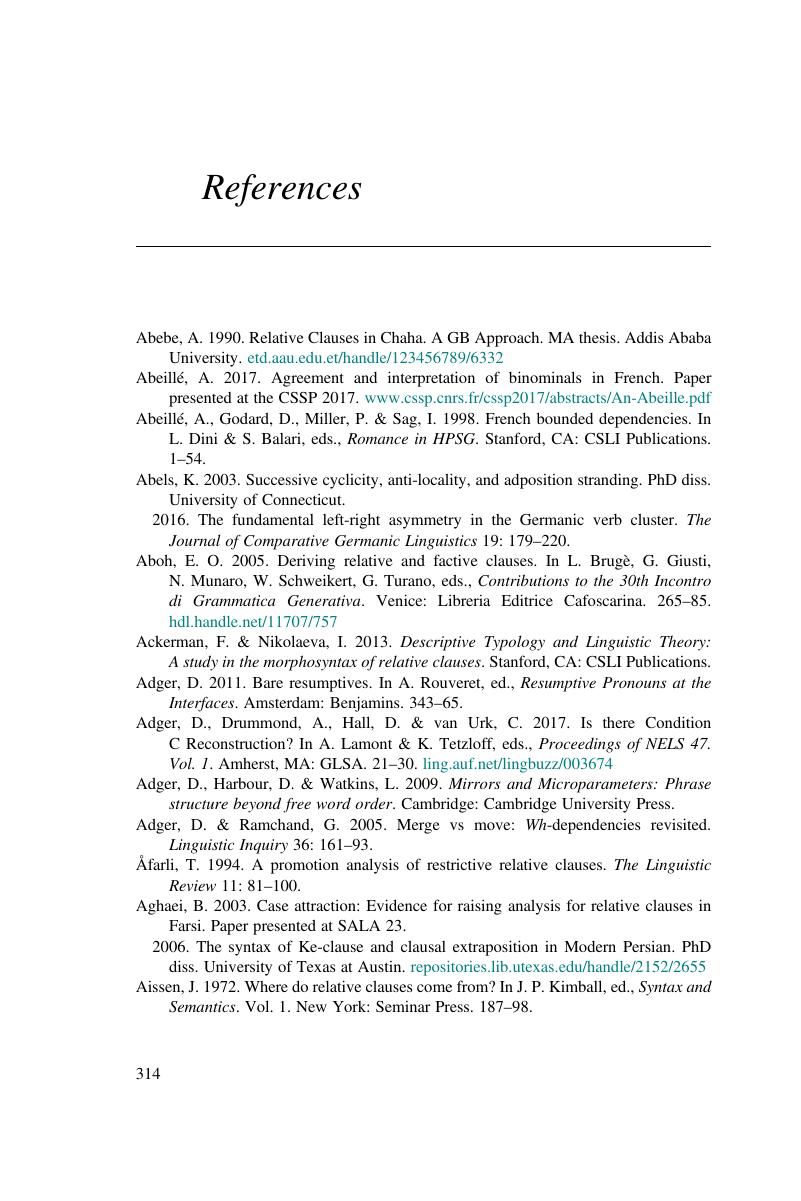Book contents
- The Syntax of Relative Clauses
- Cambridge Studies in Linguistics
- The Syntax of Relative Clauses
- Copyright page
- Contents
- Acknowledgements
- Introduction
- 1 Preliminaries
- 2 Deriving the Cross-Linguistically Attested Types of Restrictive and Maximalizing Relative Clauses from a Double-Headed Structure
- 3 Deriving the Other Types of Relative Clauses from a Double-Headed Structure
- 4 ‘Strategies’ for the Realization of the Internal Head
- 5 Some Residual Questions
- Conclusion
- Appendix: Possible Evidence for the Existence of Non-‘raising’ Derivations
- References
- Author Index
- Language Index
- Subject Index
- References
References
Published online by Cambridge University Press: 10 September 2020
- The Syntax of Relative Clauses
- Cambridge Studies in Linguistics
- The Syntax of Relative Clauses
- Copyright page
- Contents
- Acknowledgements
- Introduction
- 1 Preliminaries
- 2 Deriving the Cross-Linguistically Attested Types of Restrictive and Maximalizing Relative Clauses from a Double-Headed Structure
- 3 Deriving the Other Types of Relative Clauses from a Double-Headed Structure
- 4 ‘Strategies’ for the Realization of the Internal Head
- 5 Some Residual Questions
- Conclusion
- Appendix: Possible Evidence for the Existence of Non-‘raising’ Derivations
- References
- Author Index
- Language Index
- Subject Index
- References
Summary

- Type
- Chapter
- Information
- The Syntax of Relative ClausesA Unified Analysis, pp. 314 - 379Publisher: Cambridge University PressPrint publication year: 2020

